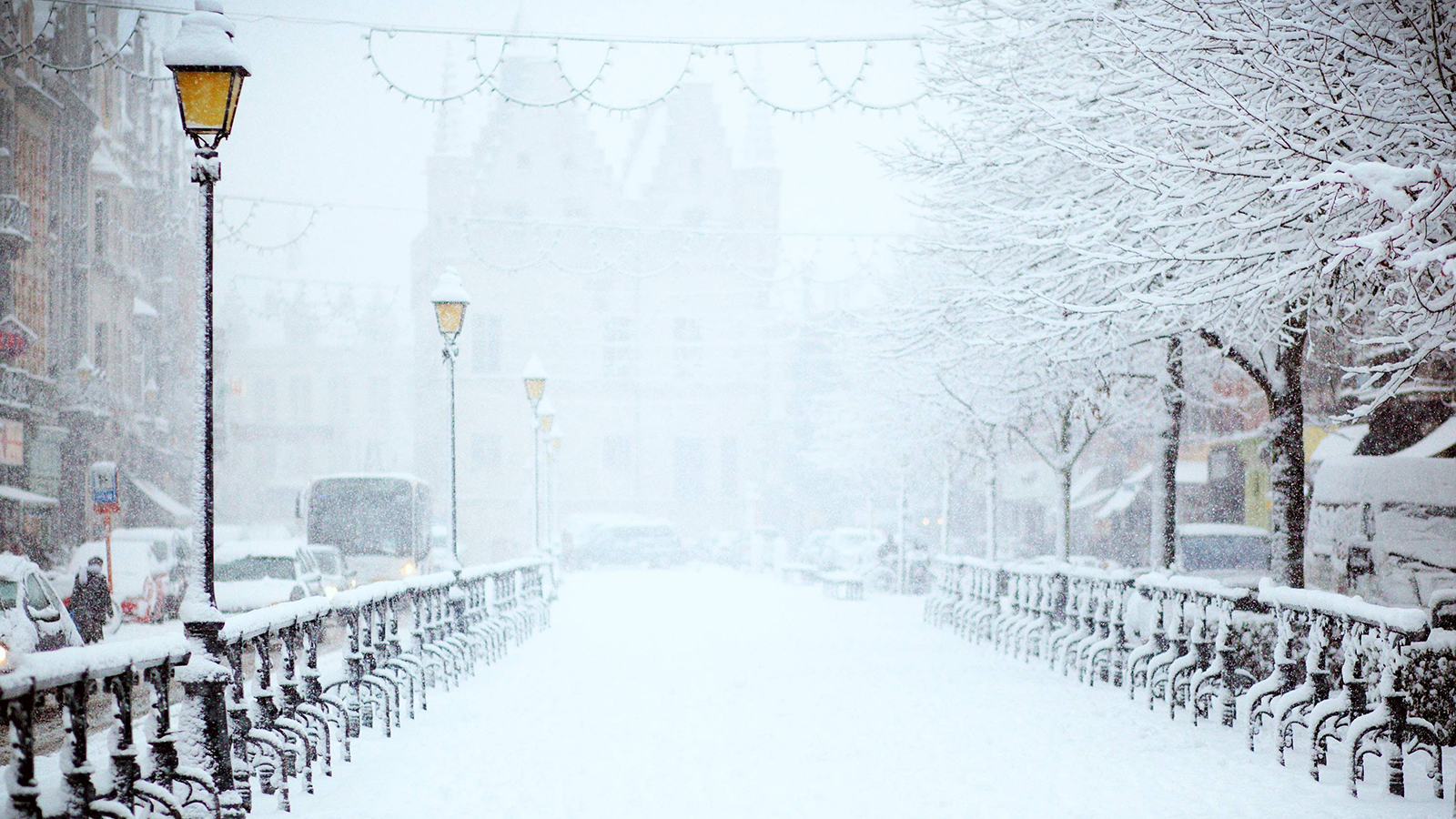Alex Odom
Data Centers | Market Leader
Associate Principal

This year I traveled home for the holidays for the first time since 2019, trading Boston’s balmy 35°F for Minnesota’s appropriately wintry 11°F. After working from home for the last year and a half, I’ve come to realize my day-to-day work as an acoustical consultant doesn’t change much with my change in surroundings. But outside, the change of the seasons brings about changes in the acoustic environment, as Acentech’s Ben Davenny wrote about the quiet of freshly fallen snow. But as I got off the plane, I wondered, “Was it louder? Or was that just my teeth chattering?”
Weather plays a big role in atmospheric acoustics, at times changing the way sound travels in dramatic ways. Meteorologists get a bad rap with the uncertainty of weather forecasts, and if not for some conservative assumptions as part of our noise modeling, you might also be asking “why is my acoustical consultant under-predicting sound?”
The speed of sound is dependent upon the medium it travels through, so the speed of sound is different in water (1500 m/s) and air (343 m/s). Sound travels by transmitting energy to neighboring molecules, so the denser the medium, the faster the waves travel. As temperature increases, the molecules move around more, so sound travels faster. So as I left Boston, sound waves traveled away from the plane at 332 m/s but slowed down to 324 m/s as I landed in Minnesota. You can calculate your speed of sound here.
Hearing planes overhead a fraction of a second early or late isn’t a huge deal, but as global ocean temperatures increase, we can objectively measure climate change by the changing speed of sound underwater. For community noise issues, the speed of sound in different seasons isn’t that meaningful for fixed sources of noise that are constantly operating, but even steady sounds begin to behave differently when the temperature isn’t consistent throughout the atmosphere.
Sound doesn’t always travel in a straight path. It can bend around corners and even over noise barrier walls. Sound traveling through the atmosphere can travel in a curved path – refraction – under the right conditions. Two of those conditions are due to changing air temperature with height.
During the daytime, it is common for the air to be warmer near the ground (e.g., hot pavement) than it is higher up in the air. This condition is called a temperature lapse, and causes the sound waves to bend upwards. In a temperature lapse, the sound bends up towards the upper atmosphere, and might skip over areas on the ground entirely – called an acoustic shadow zone. These conditions are great for community noise issues, similar effects are believed to have changed the course of Civil War battles when generals were waiting to hear the sound of cannon fire to join a battle only to hear nothing at all.
As the day shifts to night, the ground cools down faster than the air above, so the reverse temperature profile is found: cool air near the surface, with warm air above. This condition is called a temperature inversion, where the sound waves tend to bend downwards back to earth. In a temperature inversion, the sound from far away bends back towards the surface, so you could hear the sound better than usual despite being far away. A nighttime inversion can make it easier to hear highway noise, even for homes that are far away with a highway noise barrier in between. This effect is seen prominently at lakefront campgrounds of the BWCA, due to the cool air near the water, so you can often easily hear conversation all the way across the lake. While humans might not have an intuitive understanding of this phenomenon, elephants take advantage of it, knowing they can hear each other’s calls over a much larger area during early evening (> 200 km2) than during the day (50 km2).
Similar refraction effects are produced by wind. Downward refraction is caused by downwind conditions (wind blowing towards the listener), and upward refraction is caused by upwind conditions (winds blowing away from the listener). In the same way that meteorologists may err on the side of caution and tell you rain is likely, acoustical modeling in ISO Standard 9613-2 always conservatively assume that every receiver is in a moderate downwind condition.
So as it gets colder and we hunker down for winter, listen for the slight shifts in the winds that change what you can hear. Here in Minnesota, I’ll just hope that it doesn’t get cold enough to produce the loud cracks of frost quakes, a scarier winter acoustics phenomenon.